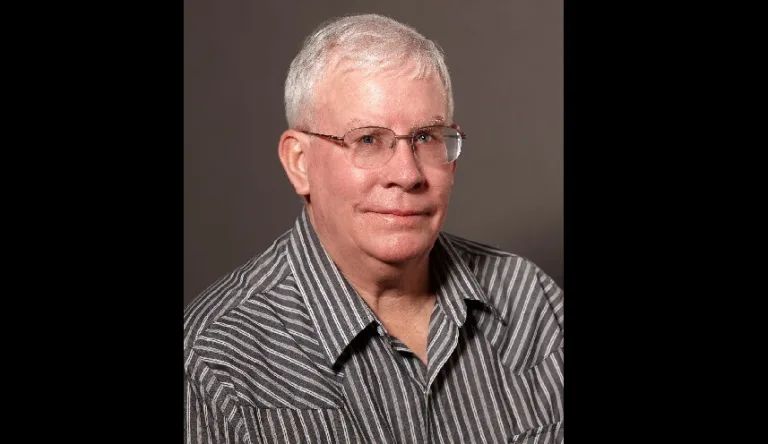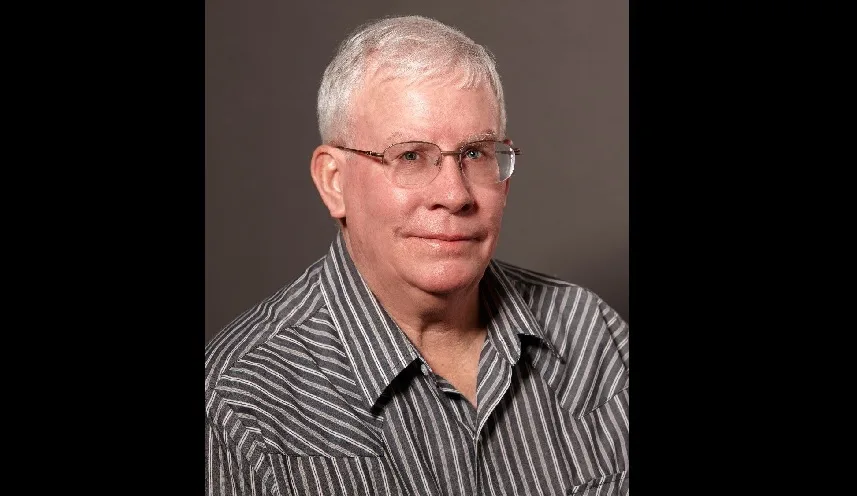PIERRE, S.D. South Dakota taxpayers could pay millions of dollars in unexpected expenses caused by inflation and workforce challenges that are hitting the construction industry.
Nine bills have been filed in the current legislative session in Pierre to increase funding for construction projects that were passed in prior years but have gotten much more expensive due to inflation and higher employee costs. All told, those bills would increase spending by $62.1 million for university labs and dorms, a new athletic arena, the state health lab and other projects across the state.
While lawmakers often consider a bill or two each session to make up for higher-than-expected construction costs, this year has seen inflationary impacts that are far beyond the norm, officials said.
The rising costs are due to inflation that has struck especially hard in construction materials and labor costs, which have risen far faster over the past two years than the overall national inflation rate of 8% in 2022 and 4.7% in 2021, according to the U.S. Bureau of Labor Statistics. The national inflation rate remained at 6.4% in January 2023, according to the government. For several years prior, the national inflation rate hovered around 2% or less.

Unprecedented increases
Andy Scull, president of J. Scull Construction Services, a Rapid City-based firm that is among the largest builders in the state, said construction companies have been hit with a multi-pronged increase in costs over the past two years. He’s been in the industry for two decades and hasn’t seen anything like it.
Core building materials now cost more than ever: steel, copper, plastics, glass and especially labor, caused by a lack of workers, Scull said.
“Everything has gone up in price, and construction is where the rubber hits the road,” Scull said.
All those fluctuations and increases make it impossible to accurately predict the cost of a large, multi-year project, he said.
“It’s almost unbelievable at this point; it’s like everything I learned through the first 20 years of my career is out the window,” Scull said.
The nine bills to increase construction spending are making their way through the legislative process.
The Joint Committee on Appropriations unanimously passed Senate Bill 93, which would raise the allocated spending for an athletics center at Dakota State University in Madison from $28 million to $40 million. The full Senate followed with a 34-1 approval.
Some bills would use state general fund money to offset the higher construction costs while others would authorize increased spending from donated funds or those from other sources.
Crystal balls were cloudy on inflation
Brian Maher, executive director of the South Dakota Board of Regents, said he was caught off guard by the rapid rise in the inflation rate over the past two years and by how dramatically that has increased the cost of construction projects. Six of the nine bills to increase spending on construction projects are related to building projects approved by the Board of Regents.
Maher said that in his time leading the regents and the Sioux Falls School District prior to that, inflationary adjustments within project budgets were typically targeted at 2% to 3% a year, and most of those project budgets held up.
“The real easy thing to look at is that inflation is so much different than it has been in the past 10 or 20 years, and then all of a sudden this last year, we saw inflation at triple what it had been before,” Maher said.
Large, multi-million dollar construction projects often take up to three years from the point of inception and cost estimation, through the design process and finally to construction completion, Maher said. During the highly volatile inflationary period of the past year or two, those initial cost estimates proved to be inaccurate and significantly lower than the real cost in 2023.
“This high rate of inflation, we didn’t see this when we were going through the process of estimating costs,” Maher said. “This is just something that I don’t think we as a society saw coming.”
Maher said that other than finding private funding for projects, the university system has few options beyond seeking funding from the Legislature in order to complete projects that rose significantly in cost.
“We did our homework up front, and based on all the data we had at that point, we estimated it was going to cost ‘X’ amount of dollars to see that project through to completion,” Maher said in an interview with News Watch. “So, for us, there’s a little tail-between-the-legs kind of thing because some folks would say, ‘Why didn’t you do your homework a year ago?’ And I don’t want to say nobody saw this, but not many saw the impact inflation would have on us and how quickly.”
STATE PROJECTS COSTING MILLIONS MORE
Here is a list of the nine legislative bills that could lead to increased spending on government construction projects that received prior approval. Projects are listed with House Bill or Senate Bill number; project type and location; and proposed cost increase.
- HB 1006: Kinsman Building, Pierre, from $1.5 million to $3.0 million, $1.5 million increase
- HB 1022: State health lab, Pierre, from $69.6 million to $82.4 million, $12.8 million increase
- HB 1030: Bio-products lab, Brookings, $20 million to $23 million, $3 million increase
- HB 1031: South Dakota State University dairy lab, Brookings, $7.5 million to $8.5 million, $1 million increase
- SB 18: State Fair livestock complex, Huron, $20 million to $29 million, $9 million increase
- SB 33: Minerals building at Mines, Rapid City, $34 million to $41.8 million, $7.8 million increase
- SB 93: Dakota State University athletics center, Madison, $28 million to $40 million, $12 million increase
- SB 172: Health center, Black Hills State University-Rapid City, $15 million to $20 million, $5 million increase
- SB 173: Lincoln Hall at Northern State University, Aberdeen, $29.5 million to $39.5 million, $10 million increase
- Total increases: $62.1 million
Delaying projects not viable
State Rep. Tony Venhuizen, R-Sioux Falls, a member of the Joint Committee on Appropriations, said that while the state is seeing record increases in tax revenues, in part driven by inflation that is driving up sales tax revenues, the state continues to see a high demand for capital and spending projects.
In an email to News Watch, Venhuizen said the state has also received large increases of federal money during the COVID-19 pandemic. But in many cases the state must use that money quickly in order to qualify for the funding programs. That has prevented the state from waiting to embark on new projects until inflation eases, Venhuizen said.
“Certainly the huge infusion of federal COVID relief funds and infrastructure funds over the past three years has led to more projects and more demand, and that has driven up costs,” Venhuizen wrote. “In many cases, though, federal funds must be used within a limited time and so there is no ability to wait to see if costs eventually come back down.”
Pay more or cut back
Venhuizen said that inflation and other cost increases have put state appropriators in a tough position. They can either increase project spending or reduce the scope of a project, which might reduce its functionality and not fulfill the purpose it was designed for.
“It is often the case that, once the project begins, costs come in a little high and those managing the project have to adapt to stay within the budget,” Venhuizen wrote. “In the case of projects approved within the last year or two, though, construction inflation has been so high that staying within the approved budget would lead to a project that is very different than what the legislature approved.”
Meanwhile, officials said that delaying a needed project almost ensures that costs will be higher as inflation, even at a lower rate than seen in recent years, will drive up the final cost of big projects.

Venhuizen added that if inflation continues to rise or even level off at its current rate, the state could ultimately find itself in a situation where construction progress is slowed, and building new facilities or upgrading existing structures could be more difficult.
“In the short term, strong state revenue growth and federal funding have allowed the state to continue to move forward with important projects,” Venhuizen said. “There is no doubt, though, that if these inflated construction prices persist, it will limit the ability of governments to fund construction projects.”
Venhuizen said the Legislature is unable to take steps to lower the cost of construction materials. But it can address the rising costs by working to keep costs down on each project and by implementing training programs to provide more skilled employees for an industry that has long faced a shortage of workers, he said.
“By far the biggest factor driving these costs is inflation in the cost of materials, and state government cannot really do anything about that. The state has funded increases of construction-related programs in higher education, which can help with workforce,” he wrote. “And we need to keep managing these construction projects in the most responsible way possible.”

S.D. builder shares nuts and bolts of inflation
While construction firms have long experienced fluctuations in the costs of some commodities, including steel, copper and wood, builders over the past two years have seen major price increases in products that are typically less volatile, such as glass, plastics, Sheetrock, electric conduit and concrete aggregates, Scull said.
Meanwhile, supply chain interruptions during the COVID-19 pandemic drove up demand and prices for necessary construction materials. Additionally, the influx of federal money allocated to state and local governments and the need to act quickly to meet timelines within those funding programs put pressure on the construction industry to keep up, Scull said.
“That increased the demand, which ultimately added to the inflationary cycle,” he said.
Finally, construction firms have seen a dramatic rise in the cost of labor, which rose by as much as 15% annually over the past two years when a 3% to 4% annual increase was more typical in previous years, Scull said. Labor costs can rise even further if weather delays or strict deadlines increase the need to pay employees overtime, he said.
‘Swimming up the inflation river’
A good example of how construction costs have climbed and how government and builders are trying to reduce costs of public projects is the Nucor Mineral Industries Building now under construction on the campus of South Dakota Mines in Rapid City.
The laboratory building was first approved in 2021 when the Legislature provided $34 million in spending authority to the Board of Regents to build it, according to state records. This year, via Senate Bill 33, the appropriation to complete the building would rise to $41.8 million.
Scull said inflationary expense increases drove up the cost of the project that requires significant infrastructure in order to function properly as a minerals lab.
“That job specifically is a laboratory, and it’s heavy in costs in mechanical and electric and steel, copper, polyvinyl chloride (PVC) piping and all the equipment,” Scull said.
In order to keep the costs from climbing even higher, Scull worked with officials from the Board of Regents and South Dakota Mines to relocate the building to a flatter, more centralized location on campus that reduced the need for electric and utility infrastructure, Scull said.
“We were swimming up the inflation river, so as we’re trying to manage the project and find more effective ways to build things and to save money, we had to come up with some big ideas to hedge this thing to lower costs,” he said.
Despite the cost increases due to inflation, which were unavoidable, relocating the building saved about $4 million in final project costs, Scull said.
Higher prices but lower profits
The workforce shortage in construction is further driving up labor costs as skilled employees in high demand can obtain higher wages, Scull said.
“I can hardly get plumbers to bid projects right now because there’s so much demand and so few of them,” Scull said. He praised state efforts to expand technical training opportunities but said he expects the workforce shortage to affect South Dakota for years.
“There’s no silver bullet on workforce, and I think it’s going to take a decade to get that cleared up,” he said.
Scull said the public should know that even as project costs rise, often by millions of dollars from start to finish, that builders are actually seeing less profit overall on each project because it is nearly impossible to accurately estimate costs as projects that may take up to three years move forward.
“We’ve actually seen a decline (in profits) because of the volatility and the risk of cost escalation that we take on,” Scull said. “The project cost is a constantly moving target and trajectory, and it used to be pretty stable. But now, it’s constantly moving, and has put a tremendous strain on the overall profitability of all companies because our costs and services are going up and continue to go up well after we have (bid) the project.”
Hope on the inflation horizon?
But at least one South Dakota economist predicts that the future is not overly gloomy when it comes to inflation and its ability to inhibit future growth or completion of big capital projects.
“As a macroeconomist, the current level of inflation is not concerning,” said Kathryn Birkeland, associate dean at the Beacom School of Business at the University of South Dakota. “We have had so long with so little inflation that many planning processes may have

forgotten to account for it,” she said in an email to News Watch.
Birkeland said that while economic transitions “can be uncomfortable as some prices rise faster than others,” the construction industry will adjust and realign resources if necessary to maintain production levels. She also noted that most economists do not see a major role for government in trying to influence markets to control inflation.
“Inflation does not necessarily slow economic growth,” Birkeland wrote. “The current cost increases are coming after record supply chain issues and an increase in inflation that many did not expect (although predicted). Economies can operate with inflation and rising costs. The transitions can be uncomfortable as some prices rise faster than others, but ultimately the markets can adjust.”













